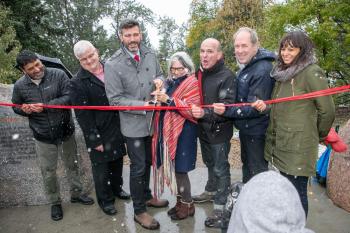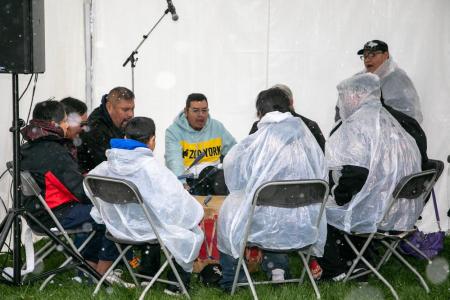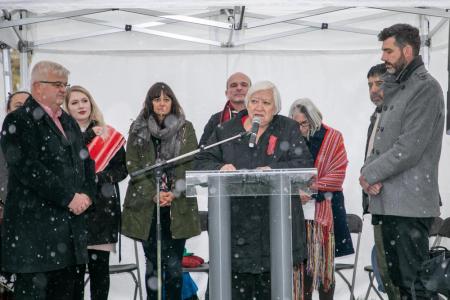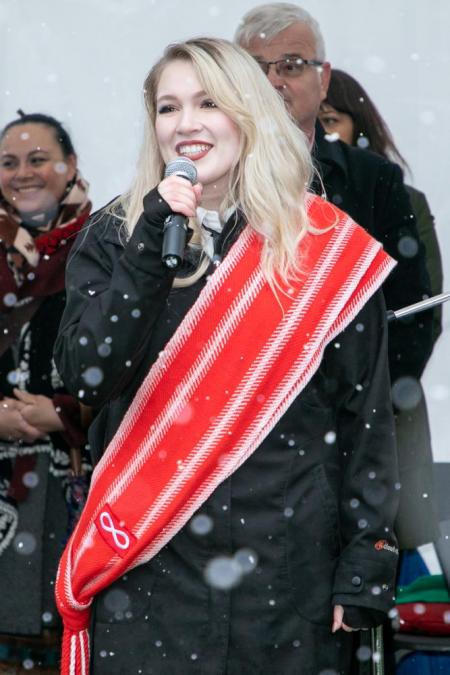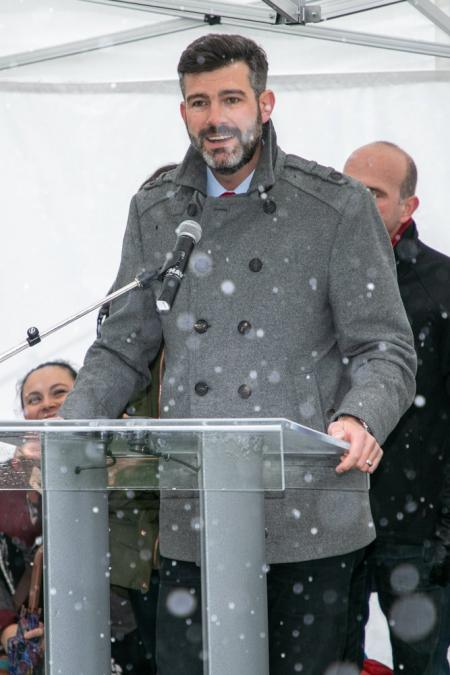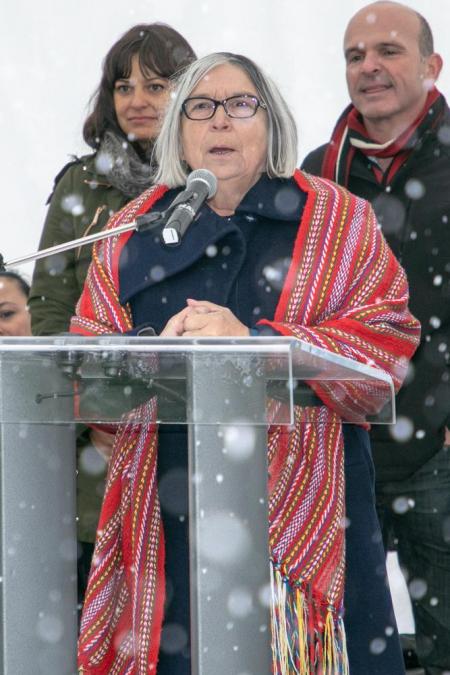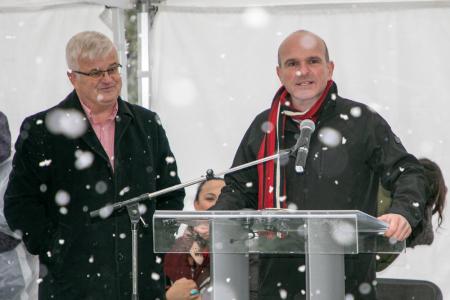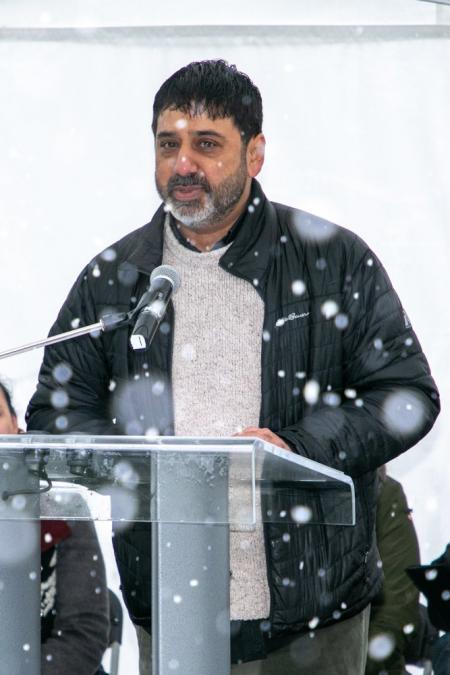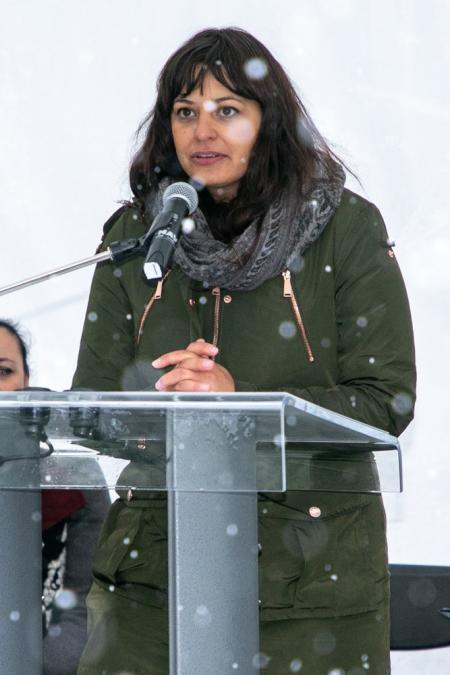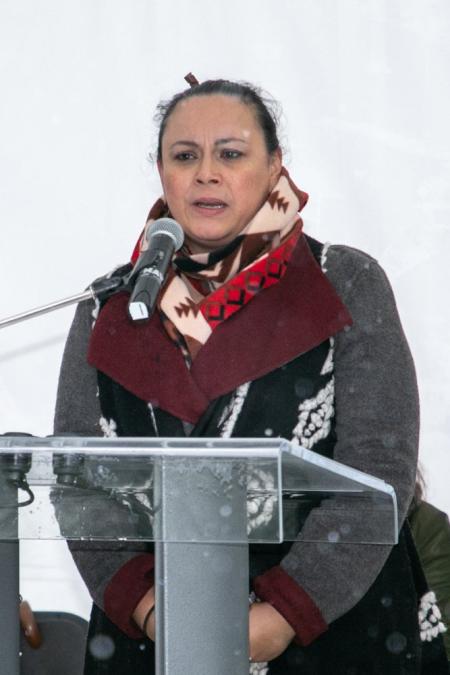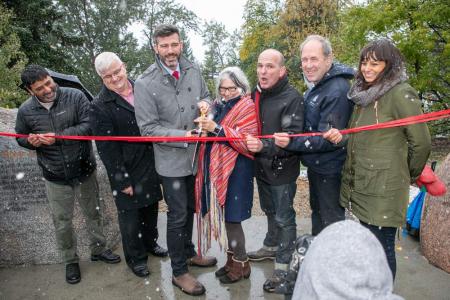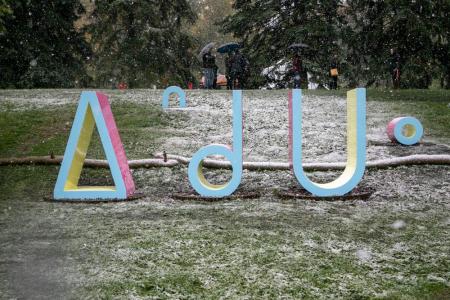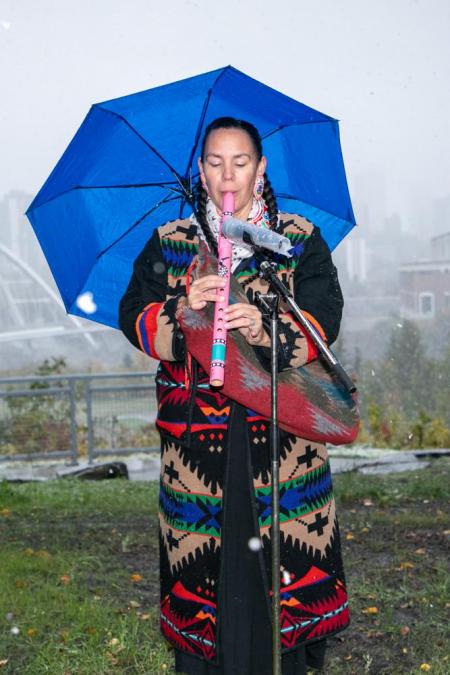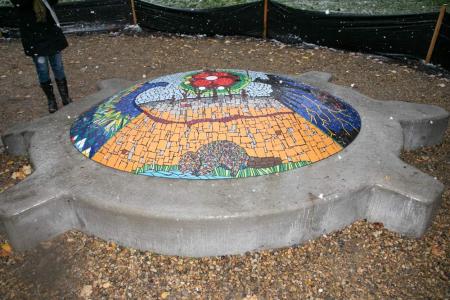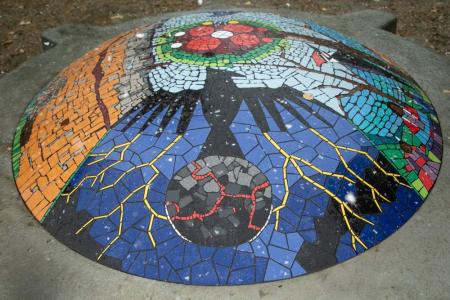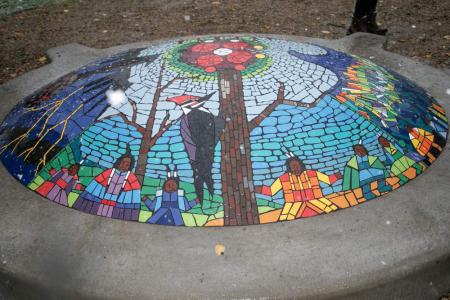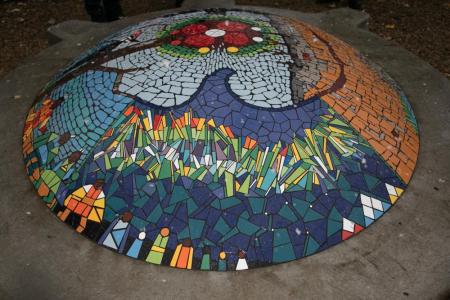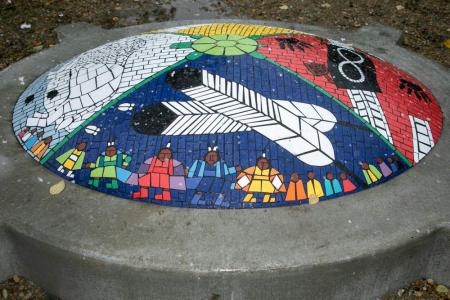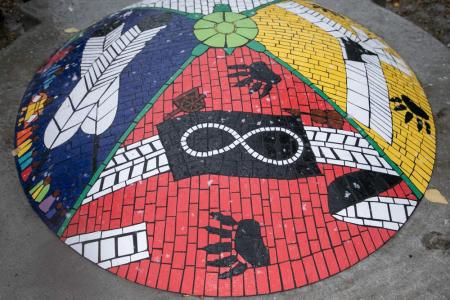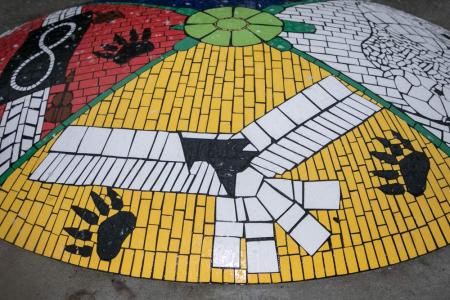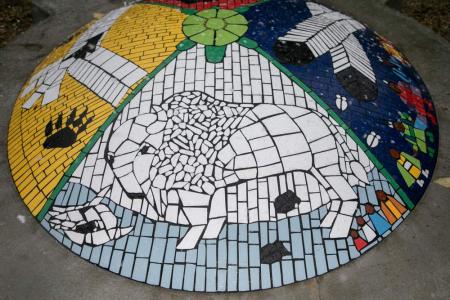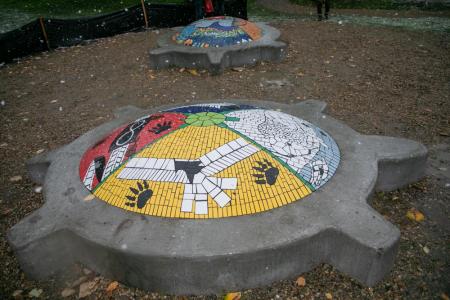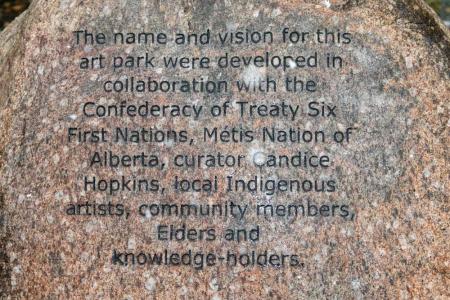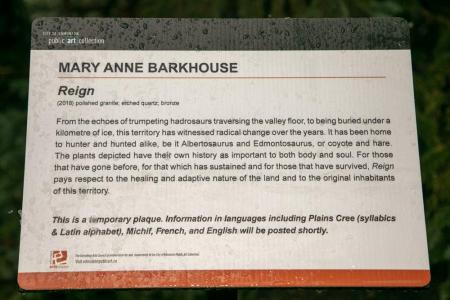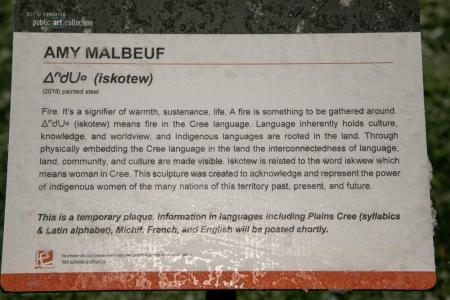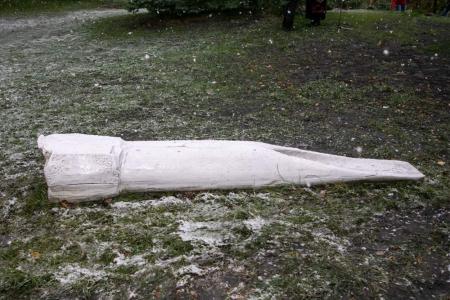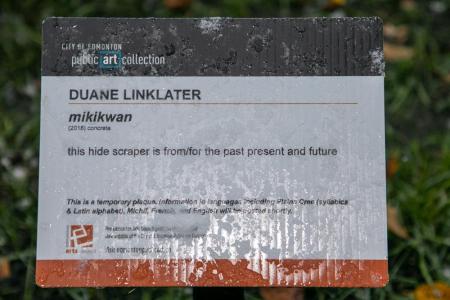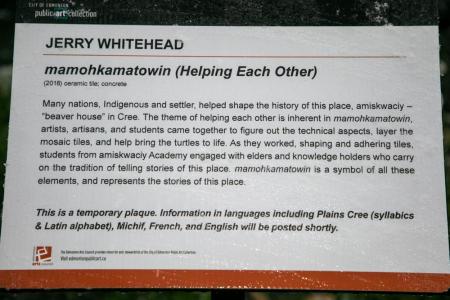Image Caption
{ALBUM_998761}
By Paula E. Kirman
Windspeaker.com Contributor
Six pieces of original art by Canadian Indigenous artists are now on permanent exhibit at the new Indigenous Art Park in Edmonton's River Valley. Named ᐄᓃᐤ(ÎNÎW) River Lot 11∞, the park had its official grand opening on Sept. 15, which saw a good turnout despite the unseasonably cold, snowy weather.
The program included comments from Audrey Poitras, President, Métis Nation of Alberta, Mayor Don Iveson, Sanjay Shahani, Edmonton Arts Council, Candice Hopkins, Curator of ᐄᓃ (ÎNÎW) River Lot 11∞, and Christine Frederick on behalf of the Steering Committee.
“There was a good, strong feeling of peace and happiness and joy. All of the emotions that come to mind when this kind of thing happens in our city,” said Shahani of the event.
The park is the result of a partnership between the City of Edmonton, Confederacy of Treaty No. 6 First Nations, Métis Nation of Alberta, the Edmonton Arts Council, and Indigenous artists that began in 2013. Six artists from across Canada were selected to create art works to reflect the “stories of this place.” The artists are Jerry Whitehead, Duane Linklater, Amy Malbeuf, Marianne Nicholson, Mary Anne Barkhouse, and Tiffany Shaw-Collinge.
Pronounced EE-NU, ᐄᓃᐤ(ÎNÎW) is a Cree word meaning “I am of the Earth”. “River Lot 11” refers to the historic river lot that was originally home to Métis landowner Joseph McDonald. The park is located in Queen Elizabeth Park in Edmonton's North Saskatchewan River Valley.
“The visibility of the Indigenous presence as expressed through the imagination of arts is significant,” said Shahani. “What is also significant is that the presence of the art in the River Valley actually speaks directly to the relationship between us as human beings to the Indigenous worldview that everything is connected and related.”
He emphasizes that the art park has transformed this part of the River Valley. “It's no longer just a place just of nature and all its splendour, but now a place that is marked through this cultural and artistic expression. People have the opportunity now to sit by the art, feel the art, but also contemplate and internalize what the art means in this landscape.”
Shahani is hopeful that the park is just the beginning of more to come in the area, in terms of Indigenous art and culture. “I think it is going to become a really important part of the Edmonton psyche, defining how we think about the city and the River Valley.
“The art park embodies values of generosity, peace, friendship and a sense of welcome to people who come here. The wonderful thing about the art park is because it is in a public space, because it has reclaimed that space with a strong Indigenous presence, it invites people from all over to enjoy and share it and experience peace and tranquility.”

